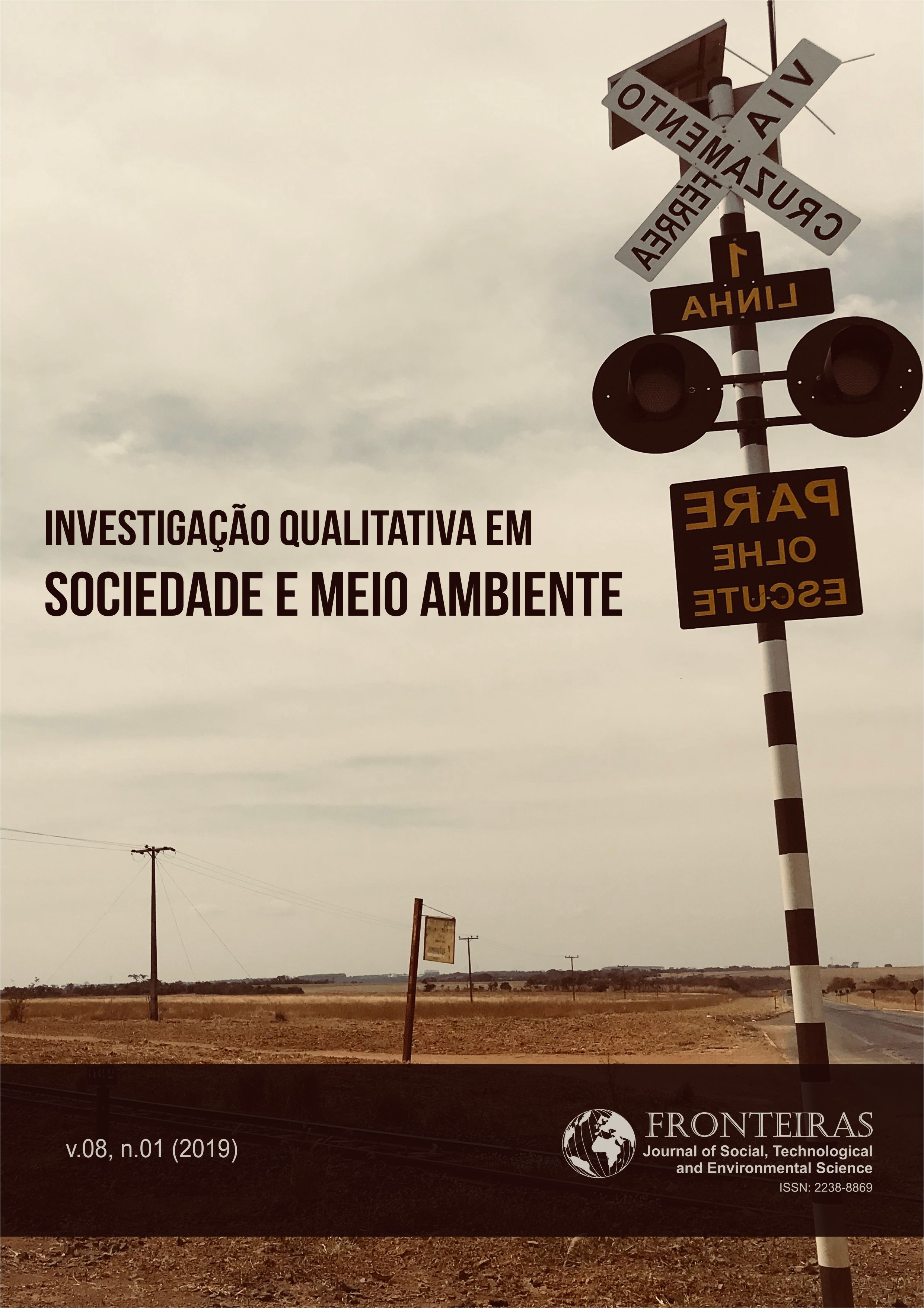The Use of Statistical Analyses in Papers and Graduate Programs in the Environmental Sciences area in Brazil
DOI:
https://doi.org/10.21664/2238-8869.2019v8i1.p233-241Palabras clave:
Capes, Qualis, InterdisciplinarityResumen
Environmental issues emerge in complex dimensions, which require an interdisciplinary framework in Environmental Sciences. Due to the diversity in statistic methods, the graduate programs need to update to form the environmental scientists. We test the hypothesis that QUALIS A1 Journals in the Environmental Science area use more complex statistical analyses. We describe the tests offered by graduate programs with PhD degree in the Environmental Sciences. 33.5% of 1560 papers evaluated, didn’t present statistical analysis. A1 Journals used more T-test, Chi-Square and Mann-Whitney than B1 Journals. There was no difference in the use of univariate, multivariate and Bayesian analyses. In Brazil there are 37 undergraduate programs in Environmental Sciences, of which 10 don’t offer statistics course. Of 38 courses offered, 73.7% provide only univariate statistics and 34.2% provide multivariate statistics. We conclude that the quality in papers doesn’t depend on the complexity of used statistical analyses, but on their theoretical framework.
Citas
Bertoldo JG, Coimbra JLM, Guidolin AF, Mantovani A, Vale NM 2007. Problemas relacionados com o uso de testes de comparação de médias em artigos científicos. Revista Biotemas 21(2):145-153.
Burdenski T 2000. Evaluating Univariate, Bivariate, and Multivariate Normality Using Graphical and Statistical Procedures. Multiple Linear Regression Viewpoints 26(2):15-28.
Butcher JA, Groce JE, Lituma CM, Cocimano MC, Sánchez-Johnson Y, Campomizzi JA, Pope TI, Reyna KS, Knipps ACS 2007. Persistent controversy in statistical approaches in wildlife sciences: a perspective of students. J Wildlife Manage 71:2142-2144.
CAPES 2013. Documento de Área 2013. Capes Brasília, 55 p.
Clark JS, Gelfand AE 2006. A future for models and data in environmental science. Trends Ecol Evol 21:375-380.
Cordeiro RA, Sanches PLB, Cavalcante KO, Peixoto AF, Leite JCL 2014. Pesquisa quantitativa em finanças: uma análise das técnicas estatísticas utilizadas por artigos científicos publicados em periódicos qualificados no triênio 2007 a 2009. Rev Adm 7(1):117-134.
Dennis B 2004. Statistics and the scientific method in ecology. In Taper ML, Lele SR, The nature of scientific evidence: statistical, philosophical, and empirical considerations, The University of Chicago Press, Chicago, p. 327-378.
Diniz-Filho JAF, Fioravanti MCS, Bini LM, Rangel TF 2016. Drivers of academic performance in a Brazilian university under a government-restructuring program. J Informetr 10(1):151-161.
Dowd M, Jones E, Parslow J 2014. A statistical overview and perspectives on data assimilation for marine biogeochemical models. Environmetrics 25:203-213
El-Shaarawi AHE, Teugels J 2005. Environmental statistics: current and future. Int Stat Rev 73:233-236.
Guttorp P 2000. Environmental statistics. Journal of the American Statistical Association 95:289-292.
Guttorp P 2003. Environmental statistics - a personal view. Int Stat Rev 71:169-179.
Hayden GF 1983. Biostatistical trends in Pediatrics: implications for the future. Pediatrics 72:84-87.
Hellems MA, Gurka MJ, Hayden GF 2007. Statistical literacy for readers of Pediatrics: a moving target. Pediatrics 119:1083-1088.
Lee A, Szpiro A, Kim SY, Sheppard L 2015. Impact of preferential sampling on exposure prediction and health effect inference in the context of air pollution epidemiology. Environmetrics 26:255-267.
Liu J, Dietz T, Carpenter SR, Alberti M, Folke C, Moran E, Pell AN, Deadman P, Kratz T, Lubchenco J, Ostrom E, Ouyang Z, Provencher W, Redman CL, Schneider SH, Taylor WW 2007. Complexity of Coupled Human and Natural Systems. Science 317:1513-1516.
Marcionilio SMLO, Machado KB, Carneiro FM, Ferreira ME, Carvalho P, Vieira LCG, de Moraes Huszar VL, Nabout JC 2016. Environmental factors affecting chlorophyll-a concentration in tropical floodplain lakes, Central Brazil. Environ Monit Assess 188:611.
Mcgeoch MA, Shaw JD, Terauds A, Lee JE, Chown SL 2015. Monitoring biological invasion across the broader Antarctic: a baseline and indicator framework. Global Environ Chang 32:108-125.
Paroissin C, Penalva L, Pétrau A, Verdier G 2016. New control chart for monitoring and classification of environmental data. Environmetrics 27:182-193.
Piegorsch WW, Edwards D 2002. What shall we teach in environmental statistics? Environ Ecol Stat 9:125-150.
R Core Team [homepage on the internet]. R: A language and environment for statistical computing; R Foundation for Statistical Computing, Vienna, Austria [cited 2016 aug 17]. Available from: https://www.R-project.org/.
Rodela R, Alasevic D 2017. Crossing disciplinary boundaries in environmental research: Interdisciplinary engagement across the Slovene research community. Sci Total Environ 574:1492-1501.
Scott M 2007. Setting, and evaluating the effectiveness of, environmental policy. Environmetrics 18:333-343.
Steele TW, Stier JC 2000. The impact of interdisciplinary research in the environmental sciences: a forestry case study. J Am Soc Inform Sci 51:476-484.
Touchon JC, Mccoy MW 2016. The mismatch between current statistical practice and doctoral training in ecology. Ecosphere 7:1-11.
Wiman BLB 1991. Implications of environmental complexity for science and policy: contributions from systems theory. Global Environ Chang 1:235-247.
Descargas
Publicado
Cómo citar
Número
Sección
Licencia
Esta revista oferece acesso livre imediato ao seu conteúdo, seguindo o princípio de que disponibilizar gratuitamente o conhecimento científico ao público proporciona maior democratização mundial do conhecimento.
A partir da publicação realizada na revista os autores possuem copyright e direitos de publicação de seus artigos sem restrições.
A Revista Fronteiras: Journal of Social, Technological and Environmental Science segue os preceitos legais da licença Creative Commons - Atribuição-NãoComercial 4.0 Internacional.


